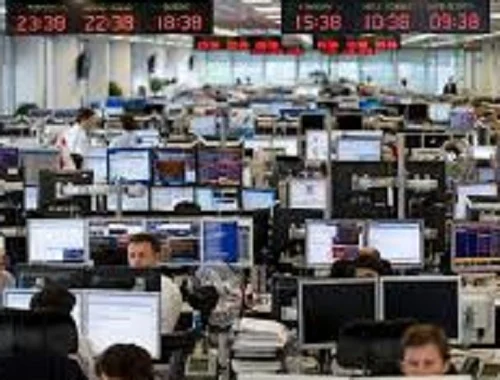Options records a reflection of global events
3rd October, 2014
CME's Sammann reflects on the impact of global events on options trading
By Derek Sammann, senior managing director and global head of commodities & options products, CME Group
Optionstrading is growing rapidly, and for good reason. We are seeing seismicshifts in volatility potential coming from a wide variety of sources. TheFed is likely to end its quantitative easing program soon, setting up a debatein the market about the timing of when zero short-term rates might beabandoned.
Equitieswent from new high to new high for the past few years, but a decelerating Chinaand deflation possibilities in Europe have brought more volatility. AndFX markets are now alive as the U.S. and U.K. economies outperform Japan andEurope. Options come into their own as risk management tools when volatilityregimes are in motion.
Indeed, earlier this year,the research firm Tabb Group released a paper outlining why options on futureswas a market primed for expansion. The prediction wasbased on factors like changing interest rate policies, the increasedelectronification of options and underlying futures becoming more attractive toinvestors.
All of these factors bringmore participants, which means more liquidity, and makes positions easier toenter and exit. Options on futures are a lower cost, more flexible way tomanage exposure to all kinds of markets.
Post-financialcrisis, we’ve seen the popularity of options grow across all asset classes,from around 30 million total options traded monthly five years ago to around 50million monthly this year – an average daily volume of nearly 2.5 million in2014.
But in September, the stronggrowth Tabb’s report predicted was fully realized. The month saw increasedtrading, including several average daily volume (ADV) records, across CMEGroup’s options complex, including agriculture, equities, interest rates andforeign exchange – to reach an all-time record options ADV of 3,087,724. This beats the previous monthly record set in January 2008 by over 30,000trades per day.
Anyone predicting an optionsexplosion was spot on, but for so many varied asset classes to achieve suchhigh levels of trading volume at the same time?
Thattook many factors converging at once to influence everyone from farmers tohedge fund managers to trade. A review of the records we saw in September couldserve as a review of world events for the month:
FX Options (record ADV 110,226): On Sept. 4, the European Central Bank surprised everyone bycutting interest rates to record lows, which spurred record trading inEuro/U.S. Dollar options. That mixed with close polls in the ScottishReferendum vote – which sparked record British Pound/USD options – andthe upcoming election in Brazil led to a single day record of $32.4bn inFX options traded on Sept. 4.
Weekly Treasury Options (record ADV of 95,110): For the second consecutive month Weekly Treasury Options sawrecord trading, and again it can be largely traced to the Federal Reserve’sperspective on interest rates. Ahead of the Fed’s September meeting, andfollowing it, with Fed Chair Janet Yellen’s “considerable time” language,market participants wanted to manage their exposure to rates staying flat forthe foreseeable future.
E-mini S&P 500 WeeklyOptions (record ADV 139,315): Increased volatility withinthe stock market during the month led to increased short-term hedging andtrading opportunities through the use of Weekly E-mini S&P 500 indexoptions, as volatility began the month just over 12%, and ended themonth at over 16 percent.
Agriculturaloptions (302,914, 40 percent increase over Sept. 2013): sawstrong growth during the month as well, led by soybeans options, which were up55% over August in terms of average daily volume. The market isexpecting record corn and soybean harvests this year, which has resulted inadditional customer hedging using options to manage price risk. We’realso seeing strong growth in newer non-standard options like our weekly agricultural options.
Geopolitical andmacroeconomic events may have triggered much of the trading in September. Butas Tabb’s report suggests, expanded availability of electronic trading had alot to do with making those records possible:
“Electronicmarkets now offered by exchanges provide many wholesale market benefitsincluding an open playing field that leads to more efficient and seamlessexecutions. Electronic trading currently accounts for more than half of totalfutures options volume, up from just 13% in 2009. As trading increases, marketstighten and better execution tools facilitate automated executions, electronictrading will continue to dominate overall futures options volume.”
A record 30.1m options were traded electronically in September. As global eventscontinue to signal uncertainty across all of these markets, we could see thatnumber increase in the near future, as options continue to climb in popularityamong market participants of all kinds.


